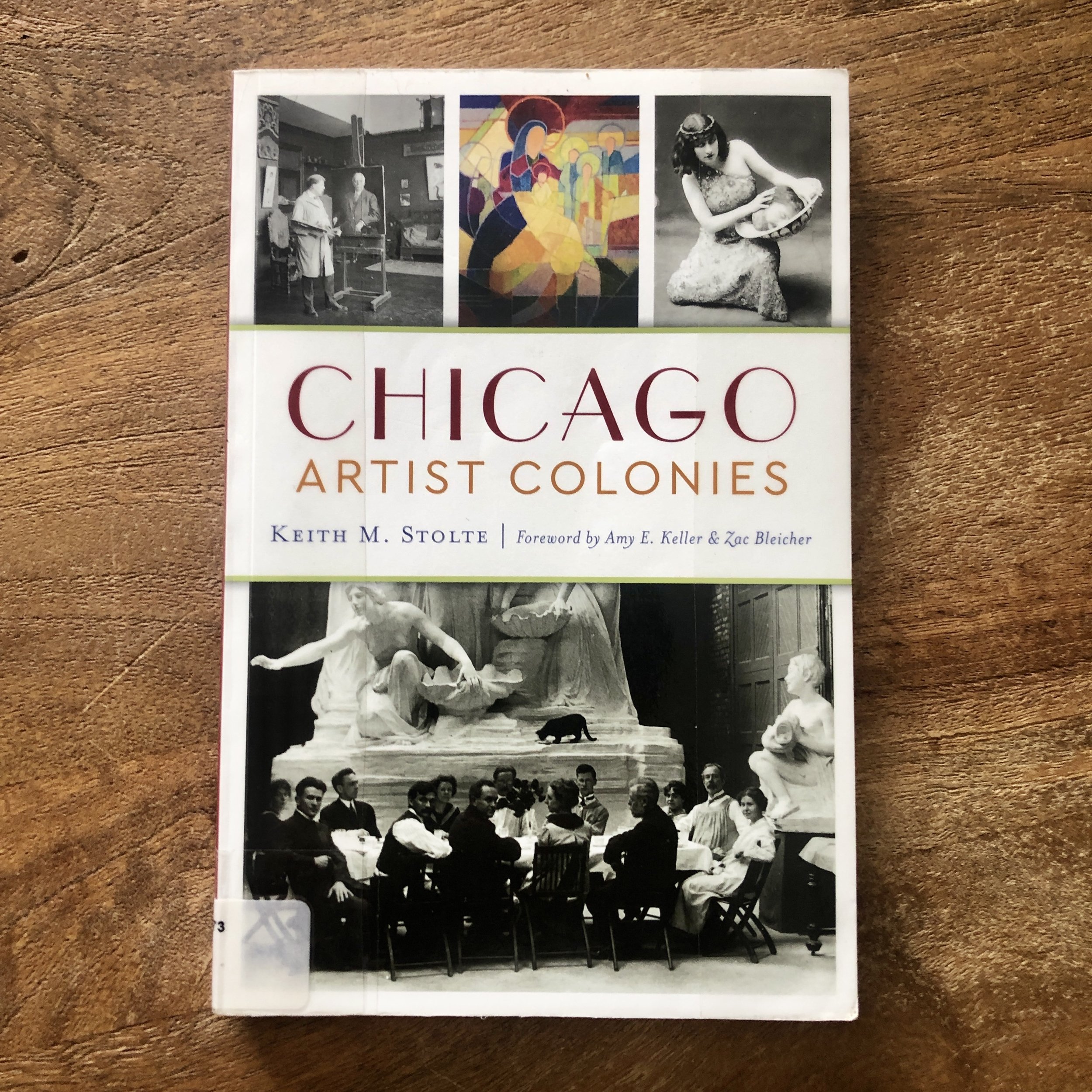Chicago Artist Colonies: Book Review
Artwise, the World’s Columbian Exposition was Chicago’s chance to shine, albeit with a focus on European artists and those from the East Coast. However, it also goaded the civic spirit of some Chicagoans to raise the cultural caché of the city, through the support of homegrown artists or those who could be cajoled into moving to the city.
This civic mindedness and support of the arts led to the establishment of art colonies both in the city and surrounding areas. Art colonies were thought to promote and enhance the arts by giving artists a place to work and congregate with like minded folks.
In the city, art colonies such as the Tree Studios, Fine Arts Building, 57th Street Artist Colony, Midway Studios, Old Town Artist Colonies (West Burton Place and Carl Street Studios), and more were built. Some are still in use today.
Outside the city, such idyll’s like the Eagle’s Nest Camp Artist Colony, Ox-Bow Art Colony, and a recent addition, The Poor Farm, allowed artists to escape the noise, heat, and dirtiness of the summer city.
Inspired by the 1893 World’s Fair, Judge Lambert Tree and his wife Anne built the Tree Studios to entice European artists to return to Chicago. It also gave local artists an opportunity to have space at reasonable rents, which allowed them more time to develop their skills and Chicago’s renown as a city for the arts.
The Poor Farm is a not-for-profit art experiment and residency, founded in 2008 at the former Waupaca County Poor Farm (built in 1876) in Little Wolf, Wisconsin. The good people at The Suburban (formerly in Oak Park, Illinois, now Milwaukee, Wisconsin) support the artists and their ideas.
You’ll need to read the book to get information on the other colonies. Additionally, the book does a great job of reviewing Chicago’s art culture in the nineteenth century, the effect on it by the World’s Columbian Exposition, and discusses the better known (at the time) artists, both local and those who had moved from elsewhere.
Short and easy read, highly recommended.
Stolte, Keith M., Chicago Artist Colonies, Charleston, SC: The History Press, 2019









